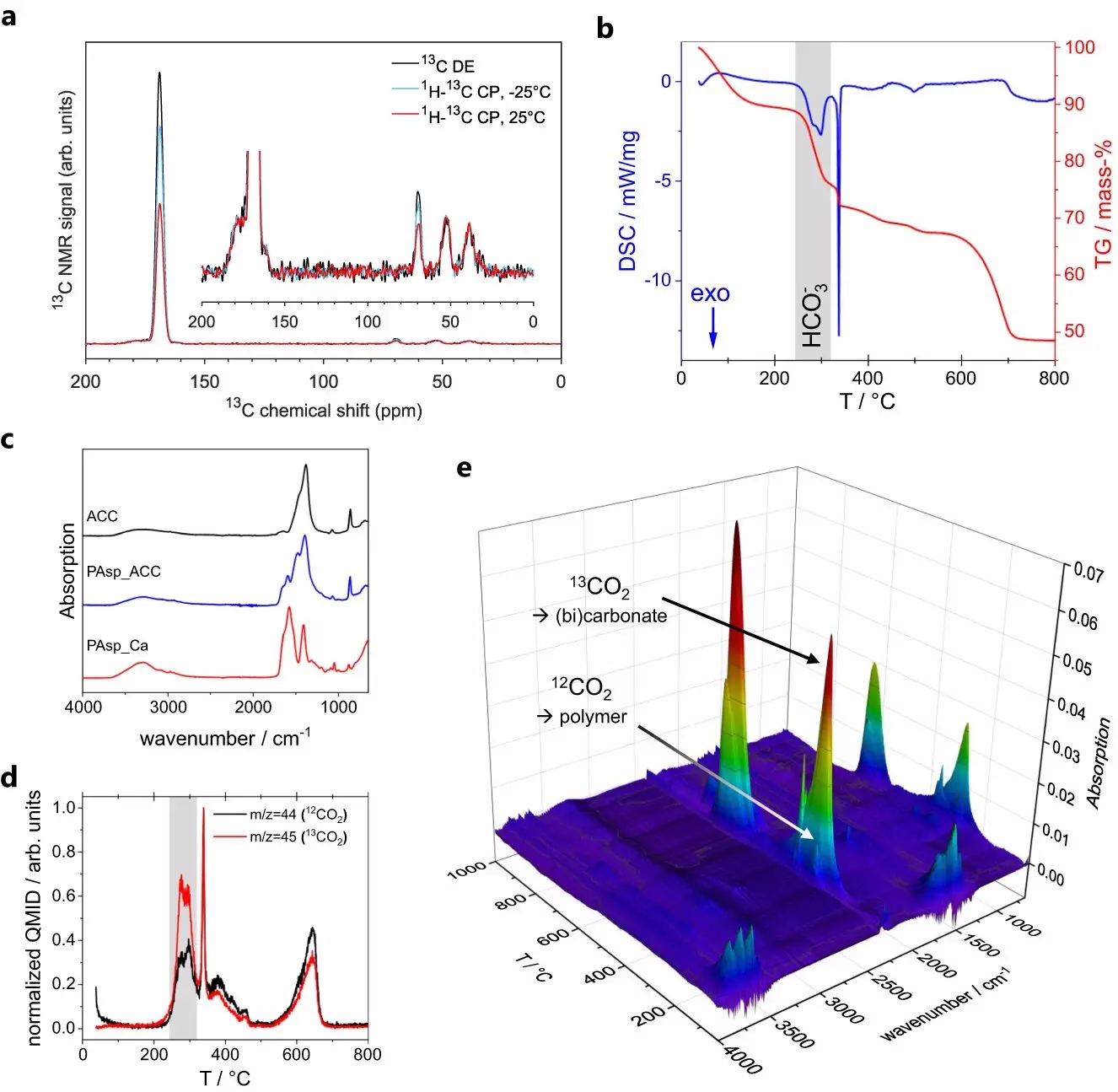Mineralized tissue is a common phenomenon among various organisms, with nacre being a well-known example due to its stunning iridescent colors. The formation of nacre, a composite of biopolymers and crystalline calcium carbonate platelets, has been a topic of intense debate among experts. While the extraction of calcium and carbonate ions from water by mollusks initiates this process, the exact conditions and mechanisms involved remain uncertain. However, one thing that scientists do agree upon is the significance of non-crystalline intermediates, such as amorphous calcium carbonate (ACC), in biomineralization. Recent research conducted by scientists from the University of Konstanz and Leibniz University Hannover has shed light on the formation pathway of ACC, providing valuable insights into the broader field of biomineralization.
To unravel the mysteries surrounding ACC, researchers led by Denis Gebauer and Guinevere Mathies exploited the ability to synthesize ACC both within living organisms and in laboratory settings. Utilizing advanced techniques like magic-angle spinning nuclear magnetic resonance (MAS NMR) spectroscopy, the scientists meticulously examined miniature ACC particles to discern their structure. Nevertheless, the interpretation of the ACC spectra posed a significant challenge due to the observed dynamics that eluded initial modeling attempts.
An important breakthrough occurred when Maxim Gindele of the Gebauer group identified the electrical conductivity of ACC. Determining the conductive properties of ACC proved to be no easy feat given the delicacy and nanoscale dimensions of the particles. Instead, the research team resorted to using conductivity atomic force microscopy (C-AFM) to measure the current passing through the tip of a cantilever positioned on a nanoparticle. The realization of ACC’s electrical conductivity shed light on its fundamental dynamics.
Building upon the observation of conductivity, Sanjay Vinod Kumar of the Mathies group conducted further MAS NMR experiments focused on examining dynamics. The findings revealed the existence of two distinct chemical environments within ACC particles. In the first environment, water molecules were embedded in rigid calcium carbonate, only capable of undergoing 180-degree flips. The second environment consisted of water molecules undergoing slower tumbling and translation due to the presence of dissolved hydroxide ions.
The challenge that remained was reconciling the observed conductivity with the two distinct environments. As solid salts are known to be insulators, the mobile environment had to play a crucial role in facilitating conductivity. According to Mathies, the researchers proposed a new model in which mobile water molecules formed a network throughout the ACC nanoparticles, with dissolved hydroxide ions carrying the charge. The formation of the two chemical environments was attributed to the tendency of calcium and carbonate ions to form pre-nucleation clusters in water. These clusters later underwent phase separation, culminating in the merging of dense liquid droplets, similar to the coalescence of soap bubbles.
The findings of this study mark a significant step towards constructing a comprehensive structural model for ACC. Moreover, this research conclusively demonstrates that mineralization commences with pre-nucleation clusters. Understanding the intricate process of biomineralization not only brings scientists closer to unraveling its secrets but also has practical applications. In particular, the knowledge gained from this research can be utilized in the development of cementitious materials that effectively capture carbon dioxide. Furthermore, given the newfound understanding that ACC is a conductor, this research can have implications in the field of electrochemical devices.
The formation of mineralized tissue, such as nacre, has long fascinated researchers around the world. Delving into the world of ACC, a critical intermediary in biomineralization, scientists from the University of Konstanz and Leibniz University Hannover have made significant strides in deciphering the path towards its formation. By utilizing cutting-edge techniques and carefully analyzing ACC particles, they have discovered its distinct chemical environments and proposed a new model that incorporates both mobility and conductivity. These findings not only contribute to a better understanding of biomineralization processes but also hold potential for various applications, ranging from the development of environmentally-friendly cementitious materials to advancements in electrochemical devices.


Leave a Reply